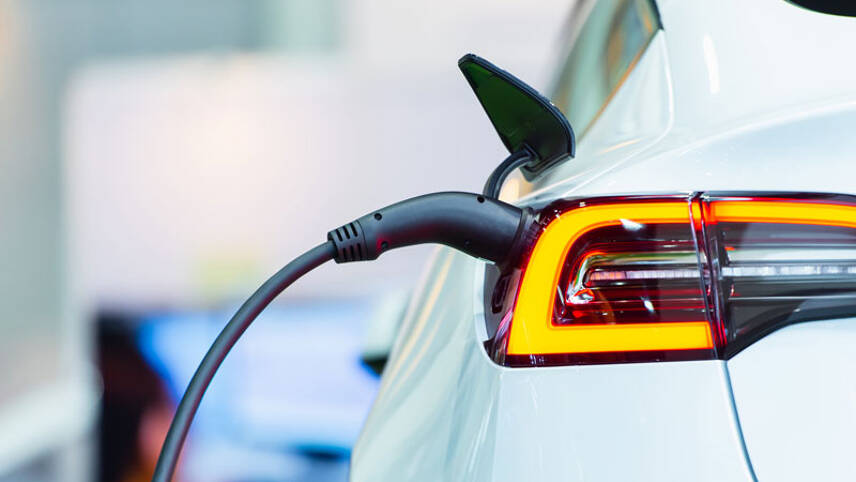Register for free and continue reading
Join our growing army of changemakers and get unlimited access to our premium content

Last year, the Government unveiled plans to implement the ZEV mandate, in a bid to ensure that automakers were properly preparing for the UK’s initial 2030 ban on new pure petrol and diesel car and van sales.
The mandate requires the automakers to keep reducing the number of new petrol and diesel cars and vans sold each year, while increasing the share of ZEVs in their annual sales targets to support a complete phase-out of petrol and diesel cars, facilitate the decarbonisation of the transport sector, and help achieve UK’s 2050 net-zero targets.
The mandate was supposed to be launched in January 2024, providing a pathway to the 2030 ban. Nonetheless, there were concerns regarding a possible rollback on its implementation.
The Government was urged by the industry leaders and green groups not to delay the implementation of the mandate; however, in a recent speech, the UK Prime Minister confirmed a five-year delay on the ban on new petrol and diesel car sales, stating a need to give the auto industry more time to prepare for the transition.
This has led to the introduction of an updated version of the ZEV mandate with a confirmed trajectory to 2030.
New annual targets
The new mandate will still enter into effect in January next year and the 2024 requirement for at least 22% of new cars and 10% of new vans to be zero-emission remains unchanged.
The updated targets for annual car sales for manufacturers are as follows: 2024 (22%), 2025 (28%), 2026 (33%), 2027 (38%), 2028 (52%), 2029 (66%), and 2030 (80%).
The updated annual van targets for manufacturers include: 2024 (10%), 2025 (16%), 2026 (24%), 2027 (34%), 2028 (46%), 2029 (58%), and 2030 (70%).
The 2035 end of sale date will put the UK in line with other major global economies, including France, Germany, Sweden and Canada.
The confirmed pathway provides manufacturers and industry players with policy certainty required to mobilise plans and investment to accelerate the industry transition and develop the necessary charging infrastructure.
Additional Government support
The Government has also introduced schemes to lower the up front and running costs of owning an EV.
This includes a plug-in van grant of up to £2,500 for small vans and £5,000 for large vans until at least 2025 and £350 off the cost of home place chargepoints for people living in flats.
Additionally, the applications for the first round of the government’s £381m Local Electric Vehicle Infrastructure (LEVI) fund are now open. The fund aims to accelerate the commercialisation of, and investment in, the local charging infrastructure sector.
Trading Scheme
Similar to the initial layout, the new ZEV mandate will remain a ‘tradable’ scheme. This means that compliance will not be assessed by directly monitoring vehicle sales. Instead, manufacturers will receive ‘allowances’, permitting them to sell up to certain number of non-ZEVs per year (the inverse of the ZEV target) and will ‘spend’ an allowance for every non-ZEV they sell.
Any manufacturer selling more ZEVs than required (and therefore selling fewer non-ZEVs than they were permitted to) will have spare allowances that they can sell on the open market to manufacturers that have not sold enough ZEVs.
Alongside the ZEV mandate, regulation will also apply to non-ZEVs to ensure that their emissions do not get any worse.
On a manufacturer-by-manufacturer basis, non-ZEV CO2 emissions will be baselined according to 2021 emissions, using the higher value of either the manufacturer’s non-ZEV CO2 average, or their whole fleet CO2 target. This target will then apply to manufacturer’s non-ZEVs until at least 2030.
Industry reaction
The clarity provided in the ZEV mandate update has been welcomed by industry players and motoring organisations including the AA and the Society of Motor Manufacturers and Traders (SMMT).
Energy and Climate Intelligence Unit’s (ECIU) head of transport Colin Walker said: “A new electric car today is a second-hand EV in about three years’ time which is cheaper to drive at around the same sticker price as a second-hand petrol car. The mandate will give motorists buying second hand a wider choice and the chance to fill up the ‘tank’ for as little as a fiver and save more than £1200 a year.
“The extra EVs that will be made available on the second-hand market through the introduction of a ZEV mandate will save UK drivers an extra £16.5bn in motoring costs in the coming years.”
Zenith’s chief executive Tim Buchan said: “EVs are essential for our net-zero future and so today’s formal clarification of the ZEV mandate provides reassurance from the government that despite the delay to the 2030 deadline, they are committed to an EV future.
“Well-defined deadlines and targets enable the industry to strategise and invest effectively and gives fleet operators much-needed clarity when setting their own ambitious EV transition goals.
“The journey towards sustainable and eco-friendly road transportation solutions will be challenging, but clarity and a proactive stance from government will help maintain the pace of investment and innovation we need to succeed.”


Please login or Register to leave a comment.